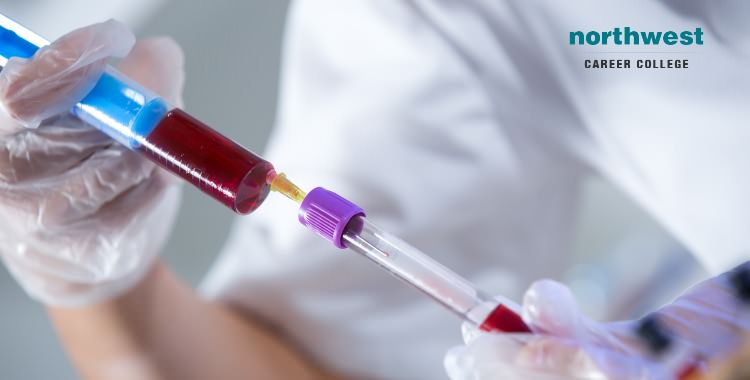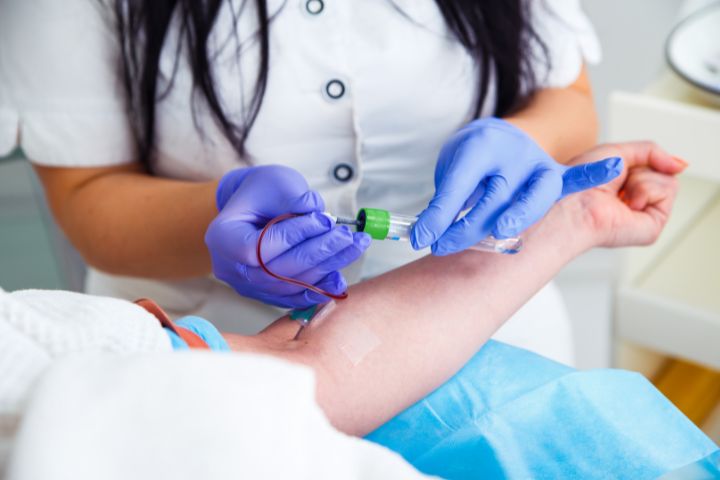The Northeast Medical Institute - New Haven Campus Phlebotomy Course & Cna Class PDFs
The Northeast Medical Institute - New Haven Campus Phlebotomy Course & Cna Class PDFs
Blog Article
6 Easy Facts About Northeast Medical Institute - New Haven Campus Phlebotomy Course & Cna Class Described
Table of ContentsThe Ultimate Guide To Northeast Medical Institute - New Haven Campus Phlebotomy Course & Cna ClassUnknown Facts About Northeast Medical Institute - New Haven Campus Phlebotomy Course & Cna ClassIndicators on Northeast Medical Institute - New Haven Campus Phlebotomy Course & Cna Class You Need To KnowThe 2-Minute Rule for Northeast Medical Institute - New Haven Campus Phlebotomy Course & Cna ClassThe Buzz on Northeast Medical Institute - New Haven Campus Phlebotomy Course & Cna ClassNortheast Medical Institute - New Haven Campus Phlebotomy Course & Cna Class Can Be Fun For Anyone
The use of such tools should be come with by various other infection avoidance and control practices, and training in their use. Not all security gadgets are relevant to phlebotomy. Before choosing a safety-engineered gadget, users ought to completely examine offered tools to establish their proper use, compatibility with existing phlebotomy practices, and effectiveness in shielding staff and people (12, 33).For settings with low resources, price is a driving consider procurement of safety-engineered gadgets - PCT Training. Where safety-engineered gadgets are not readily available, competent use of a needle and syringe serves. Unexpected exposure and particular information regarding an event need to be tape-recorded in a register. Assistance solutions ought to be advertised for those who go through unexpected exposure.
Among the crucial markers of high quality of care in phlebotomy is the participation and teamwork of the person; this is equally advantageous to both the wellness worker and the person. Clear details either written or spoken need to be available per client that undergoes phlebotomy. Annex F provides sample text for discussing the blood-sampling procedure to an individual. In the blood-sampling area for an outpatient division or facility, supply a comfy reclining couch with an arm rest.
Some Ideas on Northeast Medical Institute - New Haven Campus Phlebotomy Course & Cna Class You Should Know
Guarantee that the signs for blood sampling are plainly defined, either in a written protocol or in recorded instructions (e.g. in a laboratory form). At all times, adhere to the techniques for infection avoidance and control provided in Table 2.2. Infection avoidance and control practices. Gather all the equipment needed for the treatment and area it within safe and very easy reach on a tray or cart, making sure that all the products are plainly visible.
Where the patient is grown-up and aware, adhere to the steps described listed below. Present on your own to the client, and ask the individual to specify their full name. Examine that the laboratory kind matches the individual's identity (i.e. match the client's details with the lab kind, to make certain exact recognition). Ask whether the license has allergic reactions, anxieties or has ever before fainted throughout previous shots or blood attracts.
Make the client comfortable in a supine position (if possible). Location a clean paper or towel under the individual's arm. Go over the test to be performed (see Annex F) and get spoken permission. The individual has a right to reject an examination at any moment prior to the blood sampling, so it is essential to ensure Recommended Reading that the person has recognized the procedure.
Excitement About Northeast Medical Institute - New Haven Campus Phlebotomy Course & Cna Class
Prolong the patient's arm and examine the antecubital fossa or forearm. Find a capillary of a great dimension that is noticeable, straight and clear.
DO NOT insert the needle where capillaries are diverting, since this enhances the opportunity of a haematoma. Finding the vein will assist in determining the right size of needle.
Samplings from main lines bring a danger of contamination or wrong lab examination results. It is appropriate, but not perfect, to draw blood samplings when initial introducing an in-dwelling venous device, before attaching the cannula to the intravenous liquids.
Fascination About Northeast Medical Institute - New Haven Campus Phlebotomy Course & Cna Class
Failure to enable sufficient get in touch with time raises the danger of contamination. DO NOT touch the cleaned up website; in specific, DO NOT place a finger over the vein to assist the shaft of the subjected needle.
Ask the person to develop a clenched fist so the capillaries are more prominent. Enter the vein quickly at a 30 degree angle or much less, and continue to introduce the needle along the capillary at the simplest angle of entrance - Phlebotomy Courses. When enough blood has actually been gathered, release the tourniquet prior to taking out the needle
Northeast Medical Institute - New Haven Campus Phlebotomy Course & Cna Class Things To Know Before You Buy
Take out the needle carefully and apply mild pressure to the website with a tidy gauze or completely dry cotton-wool sphere. Ask the client to hold the gauze or cotton woollen in position, with the arm prolonged and elevated. Ask the client NOT to flex the arm, since doing so triggers a haematoma.

The Northeast Medical Institute - New Haven Campus Phlebotomy Course & Cna Class PDFs
Do not push the syringe bettor because extra stress increases the risk of haemolysis. Where possible, maintain televisions in a shelf and relocate the shelf towards you. Inject downwards right into the appropriate coloured stopper. DO NOT remove the stopper since it will certainly launch the vacuum cleaner. If the example tube does not have a rubber stopper, infuse very gradually into the tube as reducing the pressure and rate utilized to transfer the sampling reduces the threat of haemolysis.

Report this page